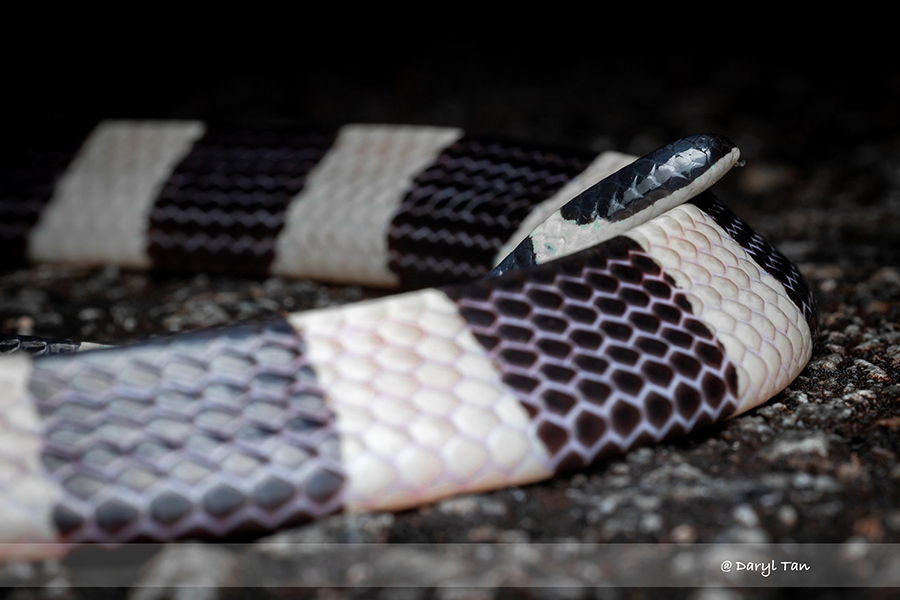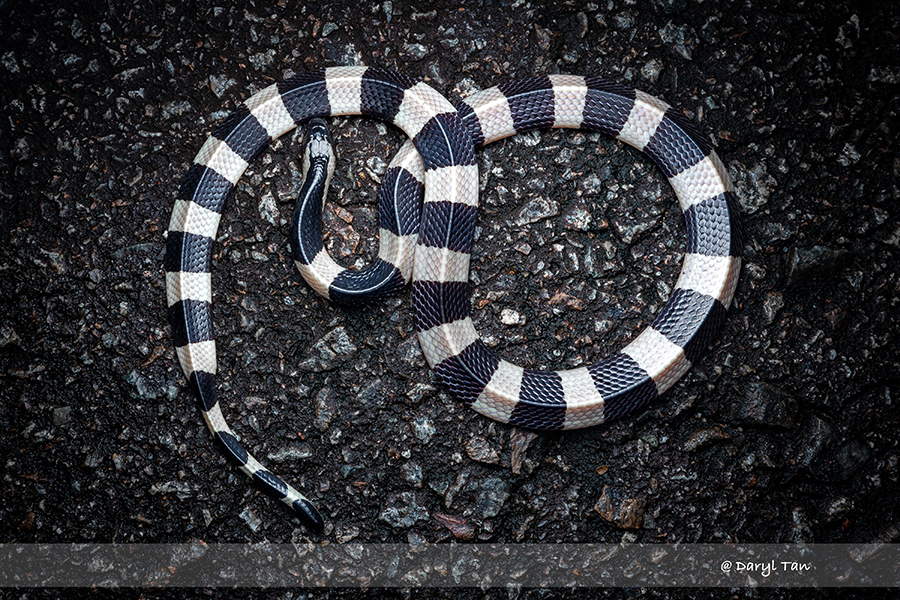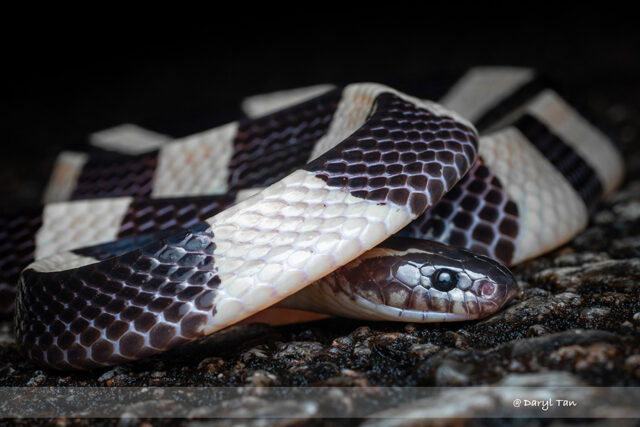The banded krait is a species of elapids endemic to Asia, from the Indian Subcontinent through Southeast Asia to Southern China. With a maximum length exceeding 2 m, it is the longest krait with a distinguishable gold and black pattern. Wikipedia
Scientific name: Bungarus fasciatus
Location: Pulau Ubin, January 2024

The Banded Krait makes no attempt to hide its tail. In fact, it was observed to deliberately expose it and make it highly visible, possibly to encourage potential predators to mistake it for its head and go for it.

Banded Krait is considered to be a coastal snake but can also be found in a variety of habitats including peat swarms and forests, often close to water bodies. It is easily identifiable by its triangular body and the alternating black and yellow bands (hence its scientific name — Bungarus means “golden” in Telugu and fasciatus means “banded” in Latin), although the ones we have in Singapore seem to have black and white bands instead.
Fun fact: Despite it being highly venomous, do you know that the Banded Krait generally does not attempt to bite even when threatened? Instead, it chooses to hide its head under its coils, but not to cower in fear. It does so so that predators will mistakenly attack its tail thinking that it is its head, and this allows the krait to either counter-attack or flee.








All photos are copyrighted to Daryl Tan
For more local wildlife photographs and fun facts, do check out his Instagram, https://www.instagram.com/clickingthecritters/














